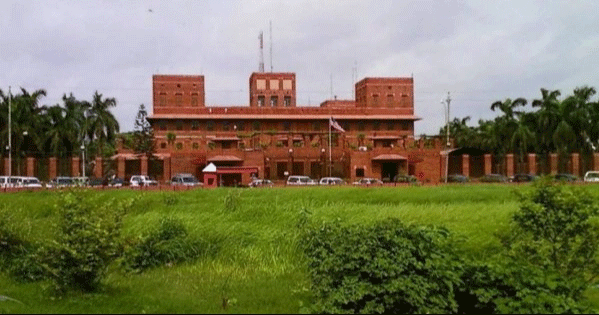BD at high risk of HIV due to 7 countries
Rafiqul Islam Azad : Bangladesh is at high risk of the infectious disease HIV (human immunodeficiency virus) due to neighboring countries, including India and Myanmar. The other countries are Pakistan, Sri Lanka, Malaysia, Indonesia, and Thailand, according to experts.
The AIDS infection rate in Bangladesh is 0.01 percent, which is very low in proportion to the population. But the infection rate is five times higher in five states of India, including West Bengal and Myanmar, which surround Bangladesh, they said adding, the infection rate in five other countries where people from Bangladesh travel frequently is also very high.
The Rohingya population taking shelter in Bangladesh also accounts for a large part of the total number of confirmed cases in the country. Taking everything into account, concerned individuals have urged screening at the country’s airports, seaports, and land ports to prevent the transmission of HIV.
Meanwhile, many people who went abroad legally or illegally returned to the country during the corona pandemic since 2019, and they are among the newly diagnosed AIDS patients. Even among their family members, the rate of infection is high. There is fear that some communities are left out of the testing.
Additionally, it has been observed over the years that some migrants are returning home with HIV. According to statistics, 30 percent of new patients diagnosed with HIV in the survey are migrant workers or their family members.
Dr. Abdul Wadud, the Manager of the AIDS/STD program of the Department of Health, stated that the success in controlling AIDS is consistently increasing in Bangladesh every year. Currently, the infection rate of the disease is 0.01 percent, which is very small in proportion to the population.
However, the rate of AIDS is very high in neighboring countries. People from Bangladesh regularly travel to these countries for employment, education, and travel, and they can become infected and bring the virus back to Bangladesh.
Dr. Wadud said that a programme was taken to control the spread of the disease from the neighboring countries. According to survey carried out by the Department of Health in 2022, the rate of intravenous drug use among AIDS patients in Bangladesh is 11 percent while the rate is 20 percent in Mizoram state of India, 19 percent in Myanmar and 11 percent in West Bengal of India. About 1 percent of AIDS patients in Bangladesh are female sex workers while the rate is 1.3 percent in West Bengal, 6 percent in Meghalaya, 1.4 percent in Manipur, 1.2 percent in Tripura, 25 percent in Mizoram and 6 percent in Myanmar.
According to the officials of the Department of Health, the rate of AIDS infection in Bangladesh is 0.01 percent, while it is 1.45 percent in India.
According to the data of the United Nations Office of AIDS and Health (November 2021-October 2022), there may be as many as 14,500 AIDS patients in Bangladesh. Among the patients till last year 9,807 people were identified as HIV positive. That is, 68 percent of the total patients have been identified. 32 percent of patients are undiagnosed.
Assistant Professor (Virology) Dr. Zahidur Rahman of Suhrawardy Medical College and Hospital said, Bangladesh is a low prevalence but high risk country in terms of HIV infection. There are a total of 14,000 HIV infected (AIDS) patients in the country.
He, however, said Bangladesh is at high risk of HIV infection as we share borders with two neighboring countries- India and Myanmar those are also at high risk of HIV infection. There are hundreds of thousands of Rohingyas in this country.
He said as the people come to Bangladesh from India and Myanmar it is important to introduce HIV screening tests at airports, seaports and land ports. This test will not cost much; it can be done in 10 minutes if some kits are given.
“We can use this money to get HIV screening tests, he added. Dr. Rahman further said, the deadly disease spreads from the blood of an infected person, from an infected mother to a child and through unprotected sex. Now the society has changed. It is important to take measures now to prevent HIV infection.”
According to the Bangladesh Bureau of Statistics (BBS), 28.5 percent of women in the country are unaware of AIDS. However, 71.5 percent of women are aware of at least one AIDS carrier. 36 percent of women are aware of all carriers. Five years ago in 2016, this rate was 29 percent. That is, the awareness rate among women about carriers has increased by 7 percent. Although the government had planned to increase 8-10 percent.
The BBS believes that the risk of AIDS infection among women is increasing due to lack of expected growth in awareness raising. According to the National AIDS/STD Control (NASC) program of the Department of Health, from November 2020 to November 2021, 12 lakh 91 thousand 69 people were tested for HIV/AIDS in the country.
According to the BBS survey, more than 14,000 AIDS patients have been diagnosed in the country. 84 percent have come under treatment. 205 people died in Bangladesh due to this disease in 2020. A total of 1,588 people have died so far.
The first AIDS patient was diagnosed in Bangladesh in 1989. The first person identified is still alive and well. He is in regular contact with HIV treatment programs. Among those infected are male and female sex workers, homosexuals, people with tuberculosis, migrant workers, mothers who come for hospital delivery services and Rohingya while 33 percent of the victims are ordinary citizens.
President Joe Biden tests positive for COVID-19 while campaigning in Las Vegas, has ‘mild symptoms’
International Desk: President Joe Biden tested positive for COVID-19 while traveling Wedne…








